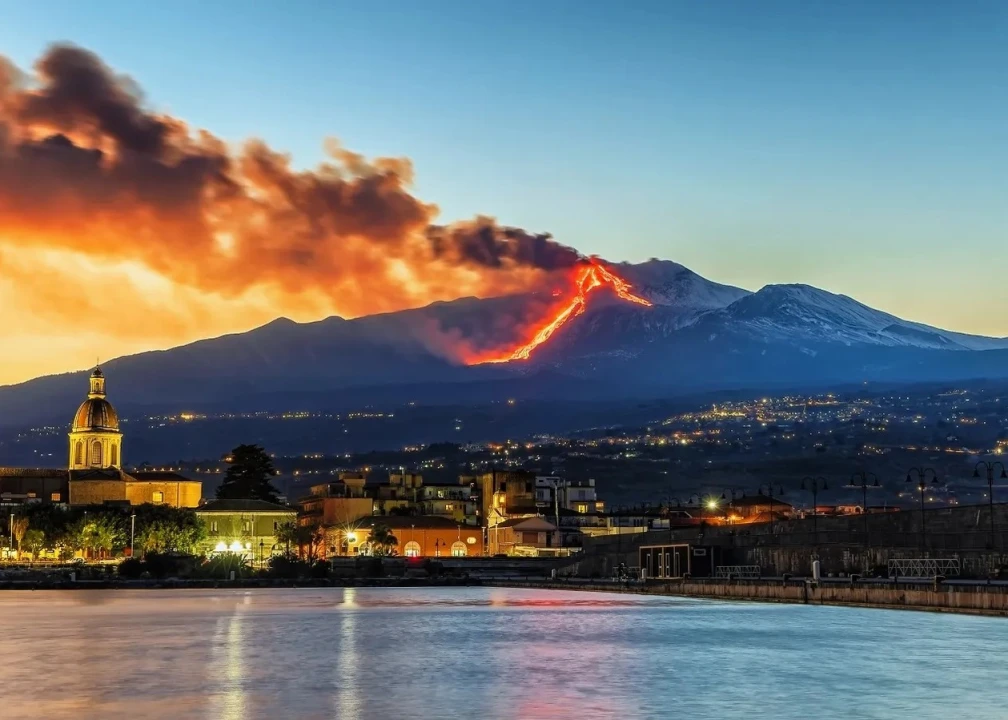Rising up over the Island of Sicily, near the coast touching on the Messina Strait, Etna is the European Continent’s most active volcano, and one of the entire world’s biggest; now it has earned its stripes as an UNESCO World Heritage Site (June, 2013).
Etna represents a natural, terrestrial scientific laboratory, and its vulcanic zones and intense eruptions have been observed and talked about since Antiquity. Writings referring to Etna date as far back as 2,700 years ago, leading the UNESCO World Heritage Centre to declare it as “one of the most documented world records among Volcanoes.”
“Its craters, ashes, lava flows, caverns and depression known as Valle del Bove make Etna a privileged destination and important center of international research with a long history that has been influential on vulcanology, geology and the other earth sciences.” Not only, but its “fame, scientific importance and cultural and pedagogical elements are significant on a global level.”All are reasons for which UNESCO chose to make the Sicilian mount a member of the World Heritage group.
Centuries and centuries of eruptions have modified Etna'souterlying landscape, transforming the typical Mediterranean flora and fauna of Sicily into an evocative, almost-lunar environment. The area is protected by the vast Etna Natural Park, established in 1987.
Visitors can wander the park via a number of nature paths, open to everyone, and the volcano’s smaller openings, produced by eruptions over time, are dispersed all around, at varying altitudes. In fact, these openings are easily-accessible and therefore present an excellent opportunity for researchers and excursionists. Besides those scholars that have known and studied Etna for years, tourists also find in the volcano an intriguing destination that makes the draw to Sicily and the beautiful Province of Catania that much greater.
The ties between Catania and Mt. Etna are indissolubile: Etna dominates the city from on high, redesigning the vast panorama that runs from the coastal strip facing the Ionian Sea, to the extensive countryside dotted with orange groves and vineyards, forests thriving with oaks and chestnuts, and even the stark, lunar terrain that gradually becomes more noticeable as it nears Etna's peak. The view from the top is almost heartstopping, so spectacular that it arrives all the way to the Island of Malta.
An eruption at night offers the opportunity for a highly-suggestive scene, with the impressive river of lava that slowly travels the mountainside, and with its gushes of bright red that light up the sky – it is an experience like no other.
Icon of Sicily, Etna is an essential stop for tourists visiting the magical Isle, even in winter, when the entire setting becomes an exceptional place for skiing and other invernal sports.
Don’t Miss…
Inside Etna Natural Park’s protected zone, the Valle del Bove is definitely a must-see; it is an enormous basin on the volcano’s eastern slope. In fact, all of Etna, whose heights reach to 3,281 ft, features extremely deep canyons and the Grotta del Gelo, a gigantic cavity in which a perennial snowfield makes its home.
Note the interesting Alcantara Gorges, formed by the erosive activity of the Alcantara River’s very cold waters over the course of centuries. For those seeking an adrenaline rush, it is also possible to move through the Gorges utilizing cables.
Once travelers have paid a visit to Catania, they often make their way to other hubs at the feet of the Mount, as several of them lie within 60 miles - including glitzy Taormina, and the nearby UNESCO World Heritage Sites of Piazza Armerina, Val di Noto, and Syracuse and Pantalica.




